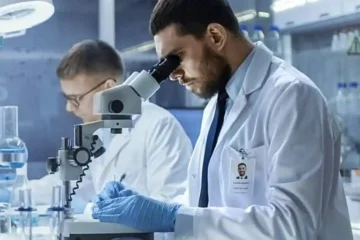Mesenchymal Stem Cells for Joint Cartilage Repair: Applications in Sports Medicine
الخلايا الجذعية الوسيطة (اللجان الدائمة) have emerged as a promising therapeutic approach for cartilage repair in sports medicine. Cartilage damage is a common injury in athletes, مما يؤدي إلى الألم, صلابة, and decreased mobility. Traditional treatment options for cartilage damage have limited efficacy, highlighting the need for novel strategies. MSCs offer a potential solution due to their ability to differentiate into cartilage-forming cells and promote tissue regeneration.
الخلايا الجذعية الوسيطة: نظرة عامة
MSCs are multipotent stromal cells that can be isolated from various tissues, بما في ذلك نخاع العظام, الأنسجة الدهنية, ودم الحبل السري. They possess the capacity to differentiate into a variety of cell types, including chondrocytes (cartilage cells), osteoblasts (bone cells), and adipocytes (fat cells). MSCs also secrete a range of growth factors and cytokines that promote tissue repair and regeneration.
Cartilage Damage in Sports Medicine
Cartilage damage is a significant problem in sports medicine, affecting athletes of all ages and levels. Common causes of cartilage damage include acute injuries (على سبيل المثال., fractures, dislocations) and chronic overuse (على سبيل المثال., running, jumping). Cartilage has limited self-repair capabilities, and damage can lead to progressive degeneration and osteoarthritis.
MSCs for Cartilage Repair: Rationale
MSCs have several properties that make them an attractive option for cartilage repair:
- Differentiation potential: يمكن أن تتمايز الخلايا الجذعية السرطانية إلى خلايا غضروفية, the primary cell type in cartilage.
- Immunomodulatory effects: MSCs can suppress immune responses, reducing inflammation and promoting tissue regeneration.
- Growth factor secretion: MSCs secrete various growth factors that stimulate cell proliferation, التمايز, and matrix production.
Isolation and Characterization of MSCs
MSCs can be isolated from various tissues using specific cell surface markers. Once isolated, they are characterized based on their morphology, growth characteristics, وإمكانات التمايز. Standard techniques for MSC characterization include flow cytometry, immunocytochemistry, and trilineage differentiation assays.
MSCs in Preclinical Studies
Preclinical studies in animal models have demonstrated the potential of MSCs for cartilage repair. MSCs have been shown to promote cartilage regeneration, تقليل الالتهاب, and improve joint function in animal models of cartilage damage. These studies have provided a strong foundation for the clinical translation of MSC-based therapies.
MSCs in Clinical Trials
Several clinical trials have evaluated the safety and efficacy of MSCs for cartilage repair in humans. وقد أظهرت تجارب المرحلة المبكرة نتائج واعدة, with MSCs demonstrating the ability to improve pain, وظيفة, and cartilage regeneration. لكن, larger-scale, long-term studies are needed to confirm the clinical benefits of MSC-based therapies.
MSC Delivery Methods
MSCs can be delivered to the damaged cartilage using various techniques:
- Injections: MSCs can be directly injected into the joint space or the damaged cartilage tissue.
- Arthroscopic surgery: MSCs can be delivered during arthroscopic surgery, a minimally invasive procedure that allows for direct visualization of the joint.
- Biomaterials and scaffolds: MSCs can be combined with biomaterials or scaffolds to enhance their delivery and integration into the cartilage tissue.
Biomaterials and Scaffolds for MSC Delivery
Biomaterials and scaffolds provide a supportive environment for MSCs and facilitate their integration into the damaged cartilage. Scaffolds can be designed to mimic the natural cartilage matrix and provide structural support for the regenerating tissue. Common biomaterials used for MSC delivery include collagen, حمض الهيالورونيك, and fibrin.
MSCs in Combination Therapies
MSCs can be combined with other therapeutic approaches to enhance their effectiveness for cartilage repair. These combination therapies may include:
- Growth factors: Adding growth factors to MSCs can stimulate cartilage regeneration and matrix production.
- Gene therapy: Genetically modifying MSCs to overexpress specific genes can improve their chondrogenic differentiation and tissue repair capabilities.
- Physical therapies: Physical therapies, such as exercise and electrical stimulation, can promote MSC migration and integration into the cartilage tissue.
Regulatory Considerations
The clinical use of MSCs for cartilage repair is subject to regulatory oversight by agencies such as the Food and Drug Administration (ادارة الاغذية والعقاقير). Regulatory requirements include ensuring the safety and efficacy of MSC-based products and establishing appropriate manufacturing and quality control standards.
Future Directions in MSC Cartilage Repair
Ongoing research is exploring various avenues to improve the efficacy of MSC-based cartilage repair:
- Optimizing MSC culture conditions: Investigating optimal culture conditions to enhance MSC chondrogenic differentiation and growth factor secretion.
- Developing novel delivery systems: Designing biomaterials and scaffolds that promote MSC integration and tissue regeneration.
- العلاجات المركبة: Exploring synergistic combinations of MSCs with other therapeutic modalities to maximize cartilage repair outcomes.
خاتمة: MSCs for Sports Medicine
MSCs hold great promise as a potential therapeutic approach for cartilage repair in sports medicine. قدرتها على التمايز إلى خلايا غضروفية, تفرز عوامل النمو, and modulate inflammation make them an attractive option for promoting cartilage regeneration and improving joint function. Ongoing research is focused on optimizing MSC delivery methods, developing combination therapies, and addressing regulatory considerations to advance the clinical translation of MSC-based cartilage repair strategies.


